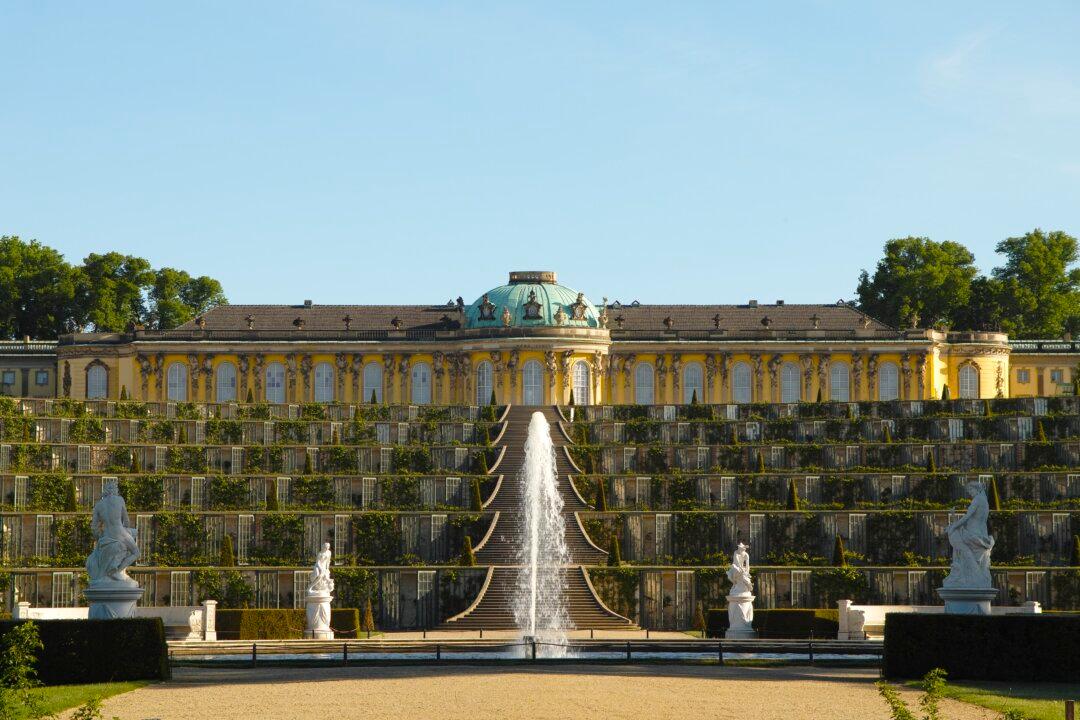No other palace represents the personality of Frederick the Great as much as the magnificent Sanssouci. Originally designed as a summer residence near Potsdam (now Germany), it represents Frederick’s ideals through its elegant Rococo architecture.
Sanssouci (“without care”) wasn’t only Frederick’s favorite place to stay but also his retreat and sanctuary. Built between 1745 and 1747 by architect Georg Wenzeslaus von Knobelsdorff according to the king’s sketches, the palace features an impressive park with unique decorative features.






